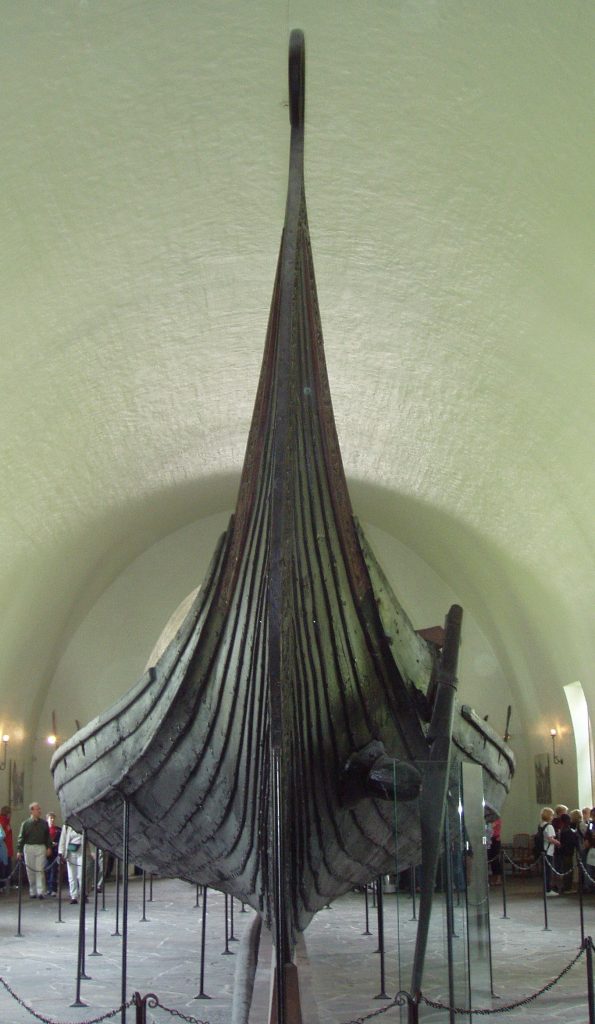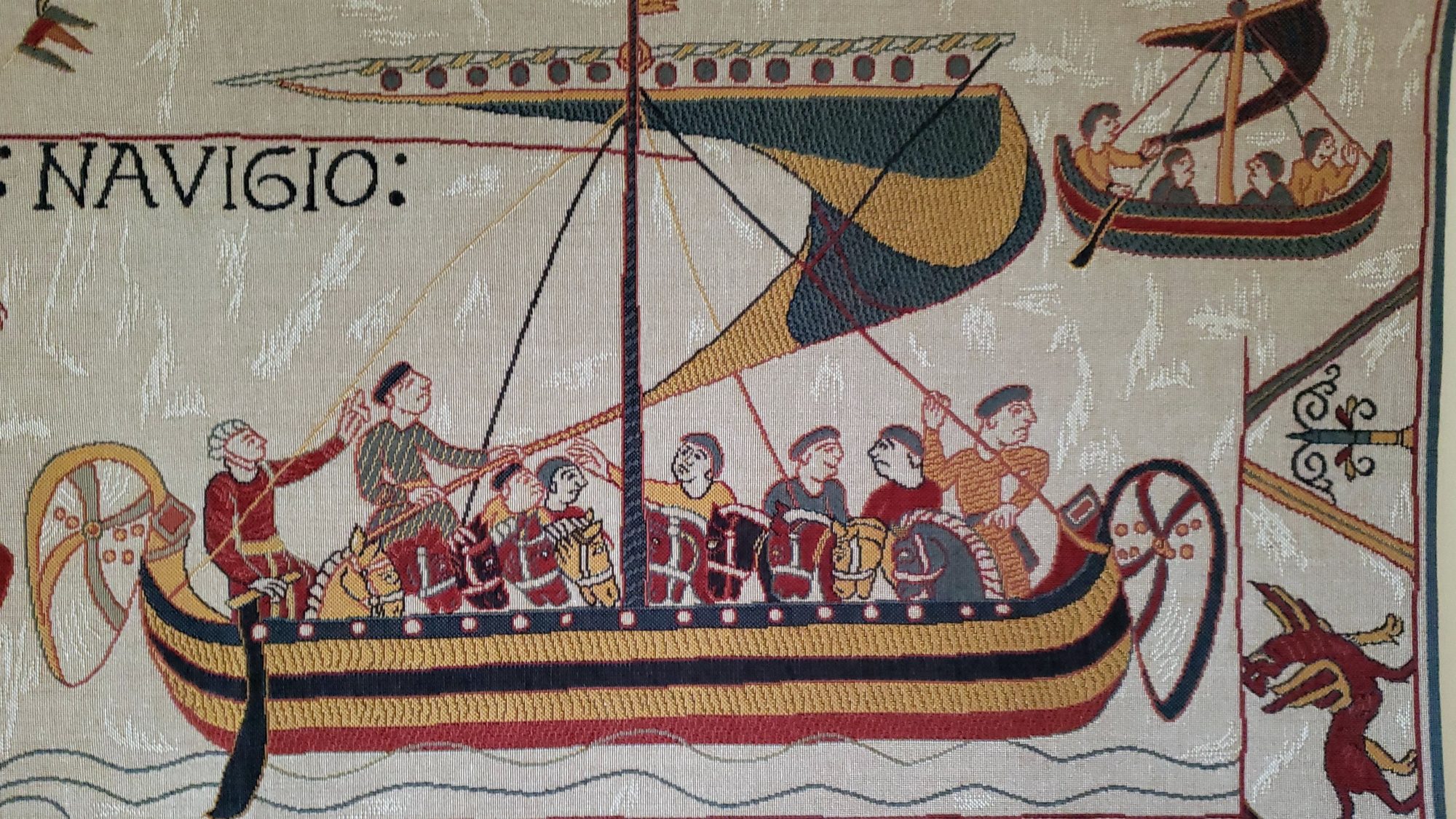Once we’ve realised that Port is on the left only when facing the pointy end (not Italians – see later) we take these terms for granted. However, those of a curious bent might wonder how they came about .
About ninety percent of us are right handed. Since roman times 1Why DOES the UK drive on the left? , at least, we have driven on the correct, left side, of the road probably because it is more natural for a right handed person to walk on that side so that, if a person found it it necessary to use a weapon, she (in post Millenial NewSpeak) would be able to wield it conveniently. There are more recent historical reasons why most less fortunate countries now drive on the wrong side (the Americans have a different reason to Europeans, why do the Chinese do it though?). With boats we drive on the wrong side and don’t use left and right so let’s explore that.
Although some boats had stern mounted steering oars from Egyptian times most had a sweep or steering oar on one side. This is most naturally controlled by the right hand using the left as a pivot. Consequently this oar would tend to be on the right side if facing forward. On a vessel large enough for the board to be fixed then it would risk damage if it came against a shore or quay. So, loading from the side would be easiest to do from the left hand side facing forward. So we have a loading and a steering side.

Linguistically most of our words are related to earlier French, German and Dutch. The steering side is straightforward in that “Starboard” clearly comes from “steering” plus “board” where board comes from “bord” for a side as in “border”, then came “boarders”.
Port is more involved. Until the mid nineteenth century the common term was “Larboard” and in medieval times “Baecbord”. That said, the term “Port” was used in documents in the mid sixteenth century. Baecbord is said to have its origins in the the fact that the steersman had his baec/ back to that side which, although seeming a little flimsy as an explanation, does make sense and has been retained in French, Dutch and German. One might wonder if the wind “backing” was connected with the “baec” element but it does not seem to work out. The English, though, thought it made more sense to use a term coming from loading or lading side and from around the fifteenth century used “Larboard”. The Italians, Lunarossa notwithstanding, don’t seem to have grasped the essentials and refer to port as left, they also had issues with directions (they have good ruins though).
The Italian terms are clearly distinguishable whereas in French, Dutch, German and, especially, English, with Larboard, the terms can be easily misheard on a ship at sea. Thus it was that the great Robert Fitzroy was credited 2Possibly incorrectly see Barometer World with instructing his crew on H.M.S. Beagle to adopt the term “Port” in 1828 and the Admiralty, acting with its customary celerity, making this so in 1844 3Wordhistories and the U.S. Navy in 1846 4U.S. Navy order .
Next you might wonder why one side is red and the other is green or why we have Red Cans to Port , if so look at Confused helm instructions and British Buoyage.
| Language 5From Sailing Terms Translated | Port | Starboard |
| French | bâbord | tribord |
| Dutch | bakboord | stuurboord |
| German | backbord | steuerbord |
| Italian | sinistra | dritta |
| Spanish | babor | estribor |
| The question of how this all worked in, say, Asian, Middle Eastern or Polynesian cultures could be pursued. |
Notes and References
- 1
- 2Possibly incorrectly see Barometer World
- 3
- 4
- 5
